There’s a certain breed of manager for whom the sight of something like a two-inch minnow can induce joyous expletives we can’t print. Happily for this tired, old planet, that breed is proliferating.
Such managers are Ross Timmons of the Arizona Game and Fish Department and people he works with. On the morning of November 13, 2015 he and colleagues from his agency, Friends of the Santa Cruz River, Sonoran Institute, National Park Service and U.S. Geological Survey were doing routine fish sampling with a portable shocker on the Santa Cruz River in southeastern Arizona.
“We saw some live bearers,” Timmons recalls. “They were the only ones we’d seen that day. I yelled, ‘Make sure we get some.’ We did, and I started sorting through them. In my mind I said, ‘mosquitofish’ because I’m so used to seeing [these nonnatives] everywhere. I held a fish and looked at it again and again. I kept trying to make it fit, and it just didn’t. Finally I said, ‘My God, we’ve got a Gila topminnow.’ Then we found them at two other sites. I had barely let out a whoop and some choice phrases when we had eighteen Facebook hits. Someone had already posted the news.”
The river had been just one of hundreds of habitats within the Gila River basin in Arizona, New Mexico and Sonora, Mexico in which these natives had been extirpated. In fact, before humans started dewatering and polluting desert streams and flinging alien fish around like confetti the topminnow had been the basin’s dominant fish.
Now it’s recovering thanks to new priorities and hard work by state, federal, county and city agencies, NGOs, zoos, Native American tribes, private landowners, ranchers, grade schools, universities and volunteers.
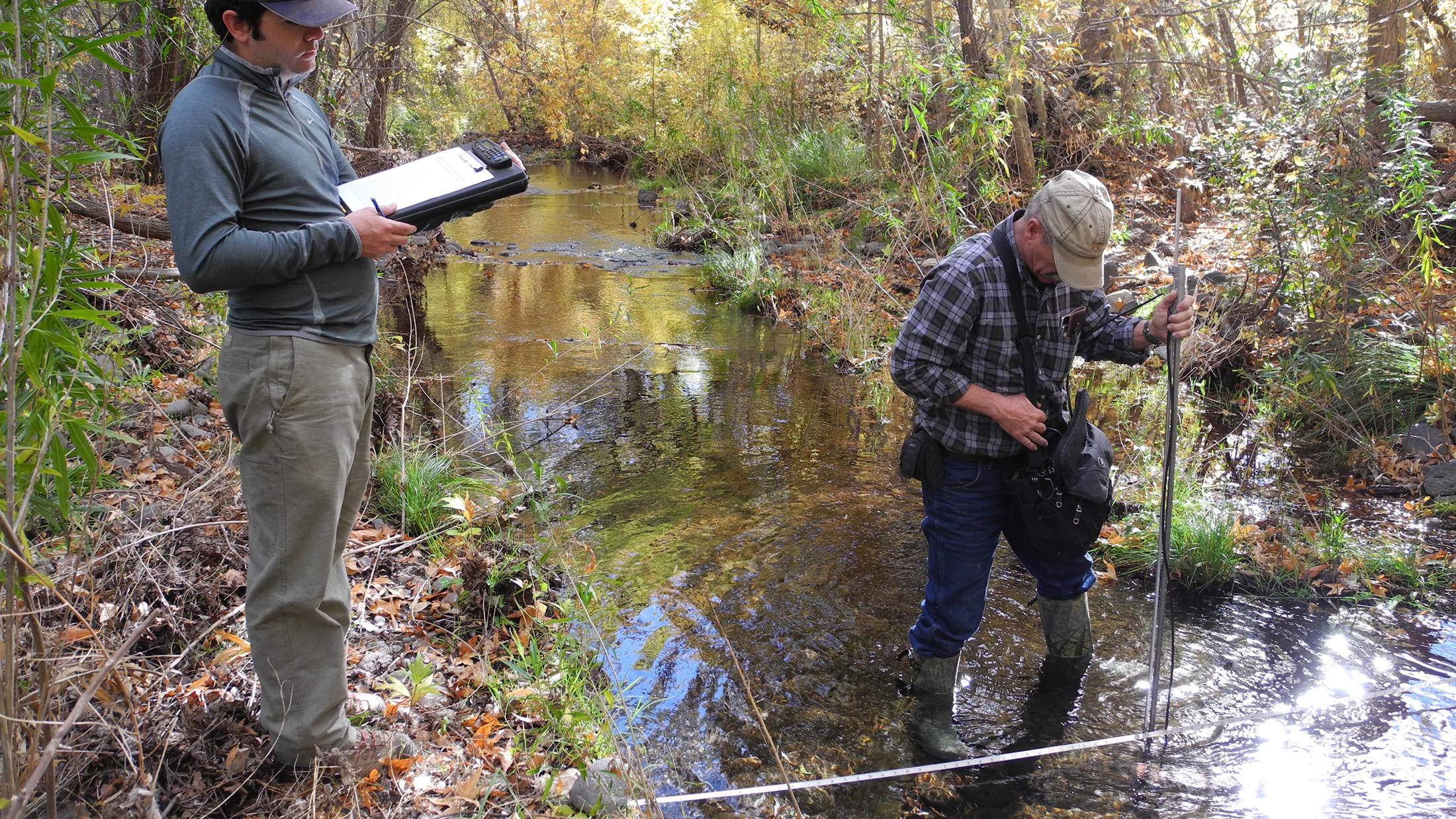
Gila topminnows are “viviparous,” meaning females bear live young, having been fertilized internally via sperm packets inserted by the male’s penis-like anal fin. Both sexes have tan to olive flanks and white bellies until breeding season (January through August) when most males turn black. Because males aggressively guard territories a few “sneaker” males mimic female coloration the better to slip in and spread their genes.
But why has the species suddenly returned to the Santa Cruz? The answer is the Clean Water Act and the Environmental Protection Agency, targeted respectively for emasculation and elimination by the incoming administration. A $64 million upgrade to the Nogales International Wastewater Treatment Plant, funded primarily by EPA, now removes nitrogen compounds that had been killing fish and wildlife in and along the river. Apparently Gila topminnows dropped down from a headwater stream. The Santa Cruz used to reek of ammonia. Now it smells like a wild river.

While recovery efforts via translocations have been underway since 1936, until recently the vast majority failed. “There used to be a shotgun approach,” says Doug Duncan of the U.S. Fish and Wildlife Service, “and lots of sites just dried up. We’ve been in a drought for almost twenty years, so we’re looking at sites when they’re potentially at their lowest. Now we’re making better choices.”
Moreover, in situations where it’s physically and politically possible state and federal managers poison out the aliens that compete with and prey on Gila topminnows. Mosquitofish and green sunfish are the worst.
Green sunfish, popular with anglers, have been and are spread around the basin. Starting in the early 20th century mosquitofish were unleashed to control mosquitoes. But Gila topminnows do this at least as effectively. That’s hardly breaking news to people moderately familiar with the species, an assemblage that excludes most of the public and most public officials. In fact, early topminnow translocations had nothing to do with preserving the species and everything to do with mosquito control. “If mosquitofish had a different name, they wouldn’t be a problem,” declares Duncan.
County health departments haven’t stocked mosquitofish since 2011, but clueless mosquito haters are still moving them around. “They’re showing up in places that have topminnows, and they quickly wipe them out,” Timmons reports.
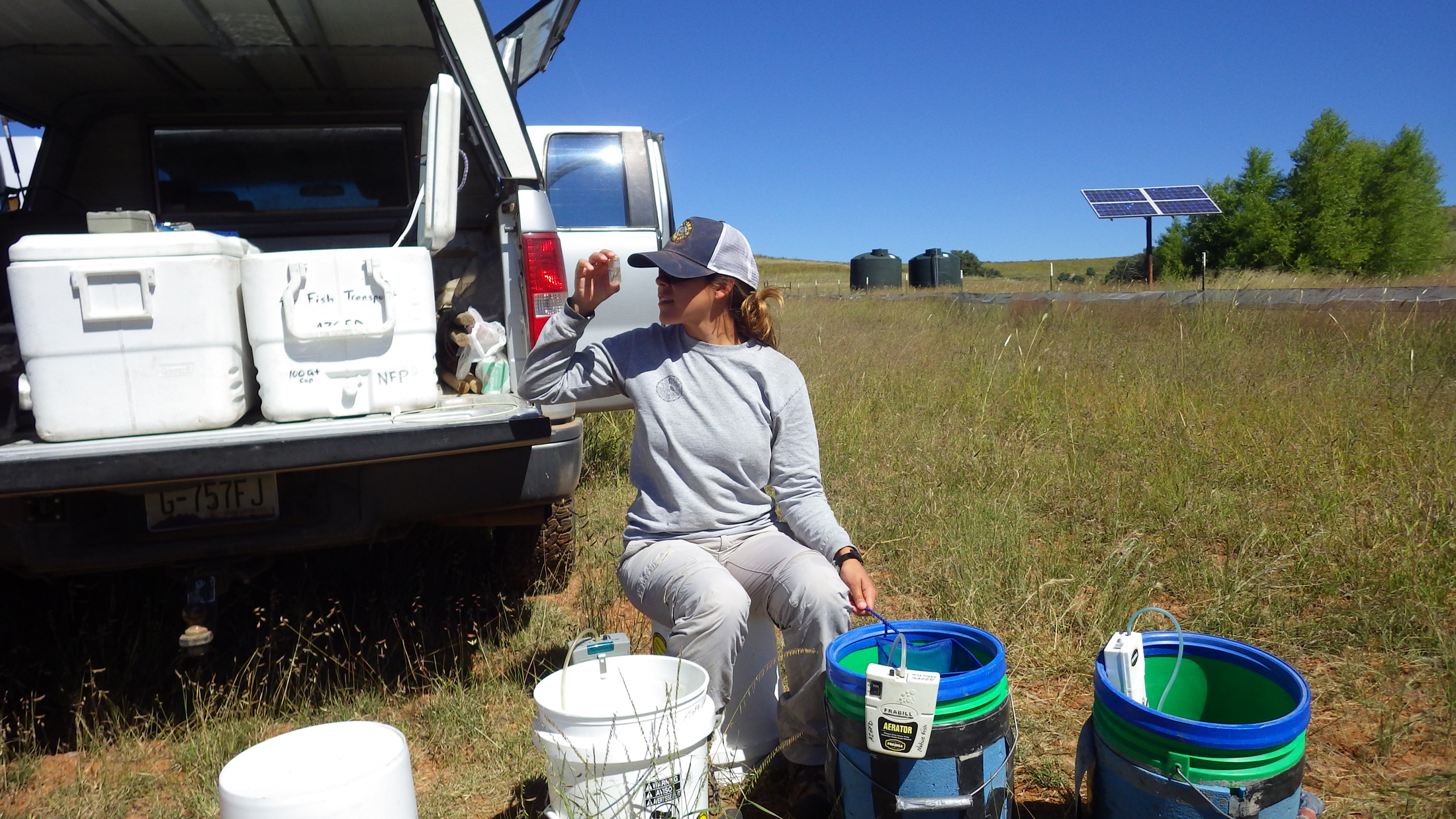
A short-lived organic poison called rotenone, almost always the only available tool for eliminating alien fish, is applied to moving water at 50 parts per billion. In modern fisheries management there is no record of rotenone harming an air-breathing organism or permanently affecting a native ecosystem except to restore it.
Rotenone treatments have safely recovered Gila topminnows and other native fishes throughout the basin. But when people hear the word “poison” they sometimes panic.
“Misinformation about rotenone has created challenges for us,” says Clay Crowder of Arizona Game and Fish. The most painful example is Redrock Canyon in the Coronado National Forest where Game and Fish and the Forest Service planned to restore Gila topminnows, along with federally listed Gila chubs, Chiricahua leopard frogs and Sonora tiger salamanders, by eradicating mosquitofish and green sunfish. A local blogger in the nearby town of Patagonia did a Google search, downloading and disseminating all the old fiction about rotenone such as the assertion that it’s “linked” to Parkinson’s disease, “persists in the environment” and “puts other species at risk.”
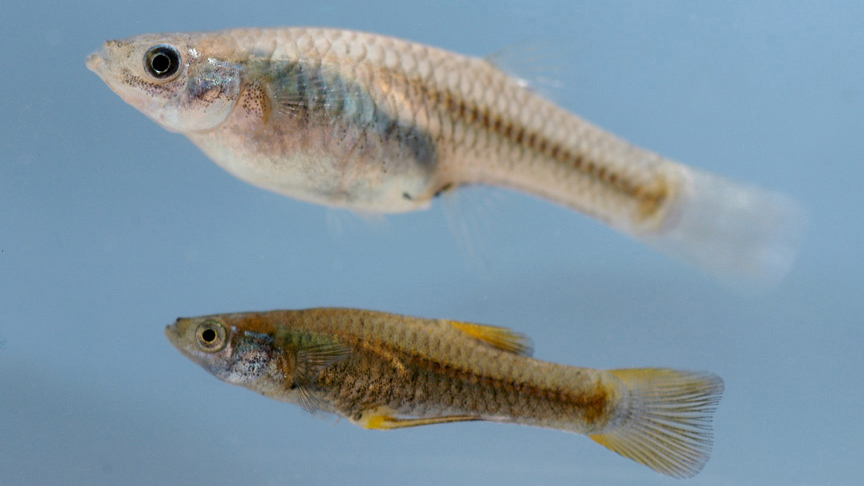
The blogger whipped Patagonia officials and residents to a froth of fear and loathing. So the feds and state backed off, the latter embarking on a lengthy, redundant study of everything already known about rotenone via an independent “advisory committee.” The committee reported that rotenone use in fisheries management is eminently safe for humans and wildlife and that no study has ever linked it to Parkinson’s disease.

Still, Arizona imposed a year-long moratorium on rotenone use, and state legislators filed bills to ban or impede it. One bill succeeded, requiring all manner of expensive, time-consuming applications, reviews, analyses and presentations. Five years after the advisory committee’s report Red Rock Canyon is still infested with mosquitofish and green sunfish.
But such setbacks are far outweighed by successes. Despite all the legislated red tape, rotenone use continues with excellent results. And thanks to outreach by Game and Fish and its partners, everyone from ranchers to elementary school principals wants Gila topminnows. They receive state lottery money to build plastic-lined ponds according to Game and Fish specs. Then the agency provides at least 250 topminnows. The goal is to get each population to 500 overwintering adults. Participants are covered under “Safe Harbor Agreements” that protect them from prosecution if there’s accidental “take.”
“These ponds help us manage genetic integrity,” says Crowder. “And the more populations we have, the less likely we are to deplete a source. It’s a numbers game. Because we have Safe Harbor Agreements and good relationships with groups like The Nature Conservancy and private entities we’ve having success with this species.”
To preserve seven perennial desert streams and the native fish and wildlife they sustain the Conservancy purchased 6,000 acres adjoining 50,000 acres of federal land in the San Pedro River watershed. All 56,000 acres are managed cooperatively as the Muleshoe Ranch by the Conservancy, Bureau of Land Management and Forest Service. Thanks to translocations and such management as controlled burns Gila topminnows now thrive at six sites. Game and Fish has been moving some from springs near ranch headquarters to the ranch’s lower Bass and Wildcat Canyons.
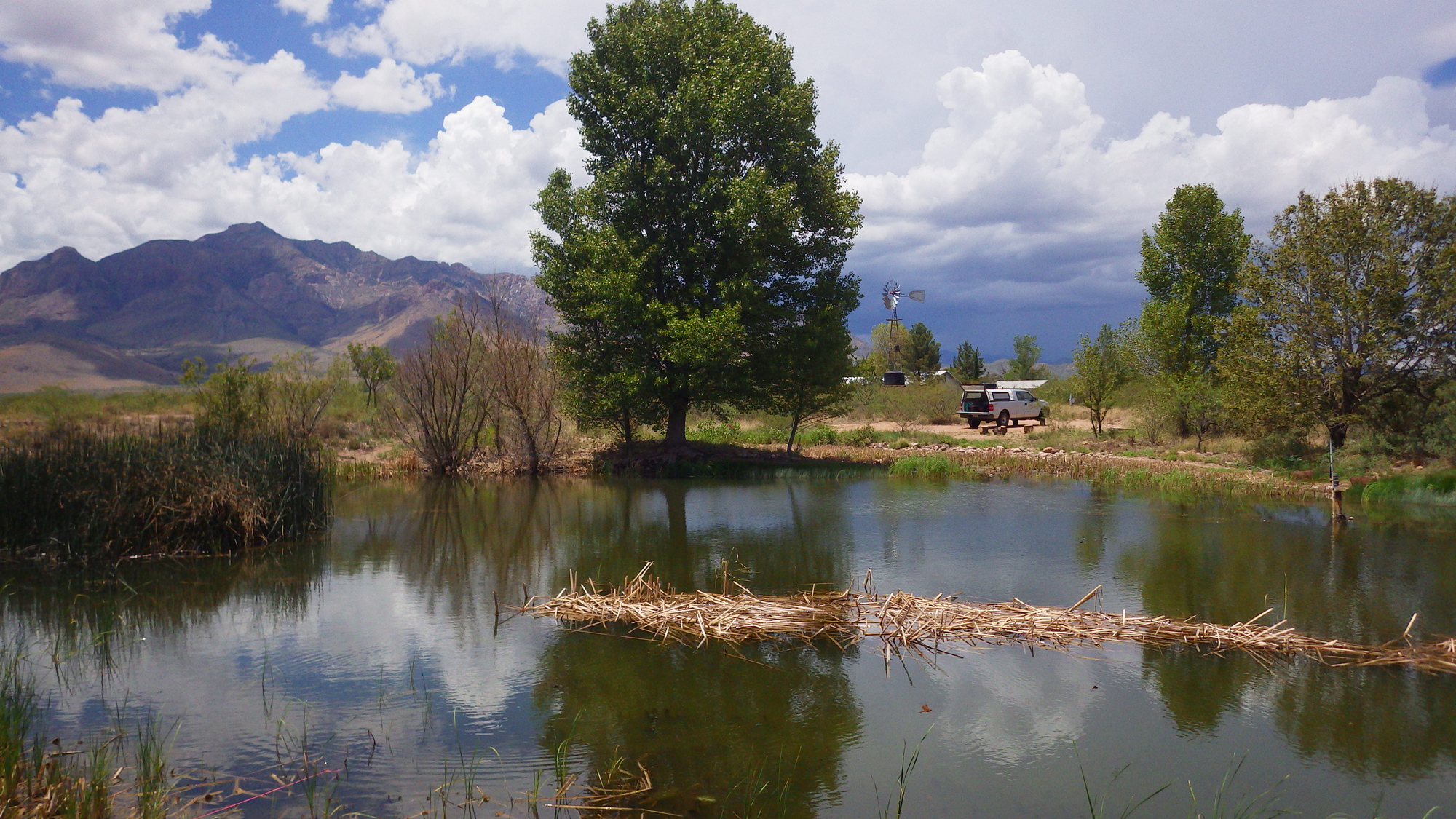
“We have one system, Redfield Canyon, that still has green sunfish,” says preserve manager Ron Day. “We remove them with hoop nets baited with dog food. Next year we’ll put in a fish barrier.”
The Gila topminnow won’t make it off the Endangered Species List in the foreseeable future, but extinction now seems unlikely. When the species was listed in 1967 it was known to exist at only seven sites. Currently there are at least 82.
The most noteworthy of these is the Santa Cruz River. Reappearance of the topminnow there is far more than a local or even state story. For one thing, it’s spectacular vindication of the Clean Water Act and the EPA. For another, it emphasizes the importance of properly treated effluent. Many rivers nationwide, the Santa Cruz included, are now maintained mostly by effluent.
As water becomes scarcer there will be increasing temptation to use that effluent for purposes other than maintaining native ecosystems. But with water conservation, an unimpaired Clean Water Act and a functional EPA natural flows can be maintained to the benefit of fish, wildlife and humans.
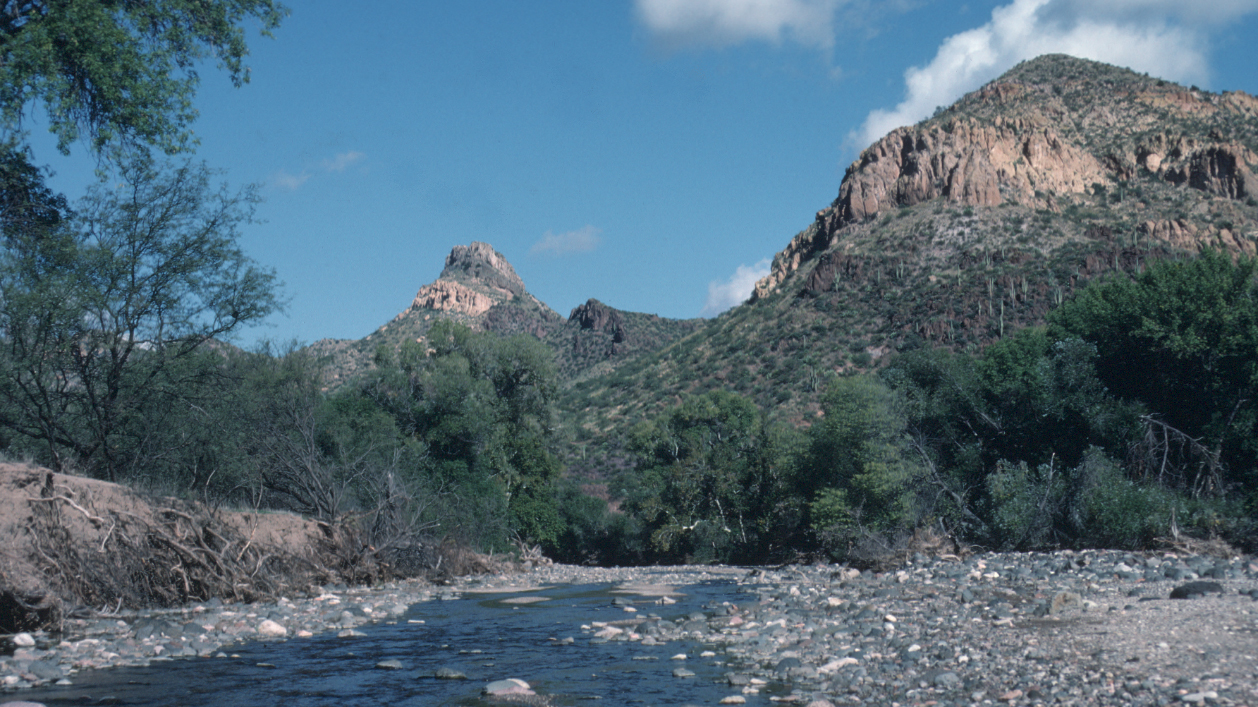
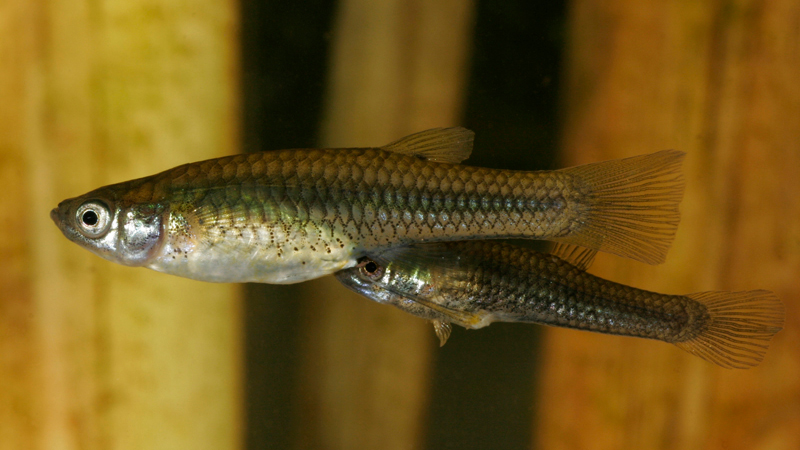

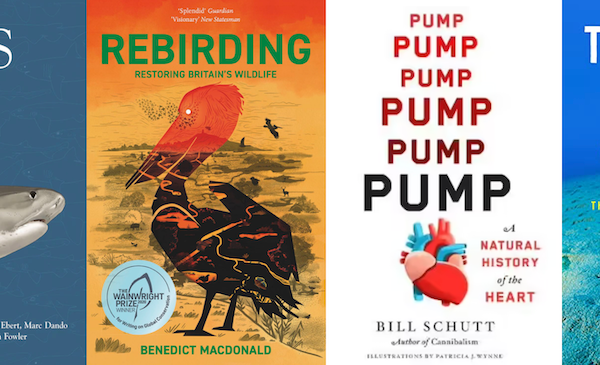

Greetings!
I realize this blog was posted the end of 2016 and I’ve just now discovered it on this day the 19th of April 2023. I thought I would begin here by inquiring as to how one might save a significant number of Gila Topminnow now gathered at the base of a waterfall of sorts where Sabino Creek meets the Tanque Verde Wash? Before the running water soon recedes back to Sabino Canyon.
What good news. As some of you may remember, my PhD research back in the Pleistocene was on the life history of the Gila Topminnow and its interaction with Gambusia affinis. Nice photos too.
Wonderful article, thanks for recognizing the importance of this endangered species recovery.
You should come down here some time and see how beautiful the Santa Cruz River is (or look at our website, foscraz.org); our Santa Cruz County reach rivals even the San Pedro for riparian habitat and now, even aquatic habitat!
Cheers to the gila topminnow, who appear to be thriving again in the Santa Cruz River! It’s been great to coordinate this annual fish survey the last 8 years and help those who are leading the overall recovery effort of this species.
https://sonoraninstitute.org/2016/endangered-fish-thriving-in-santa-cruz-river/
Thank you for the great article Ted. The Gila topminnow thanks you!
https://www.fws.gov/southwest/es/arizona/Gila_Top.htm
http://www.azgfd.gov/w_c/nongameandendangeredwildlifeprogram/Desert_Pupfish_Gila_Topminnow.shtml